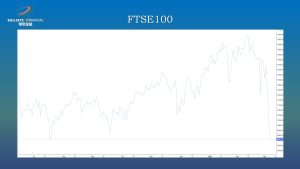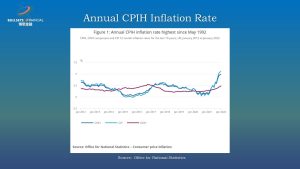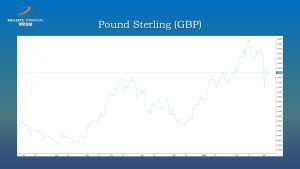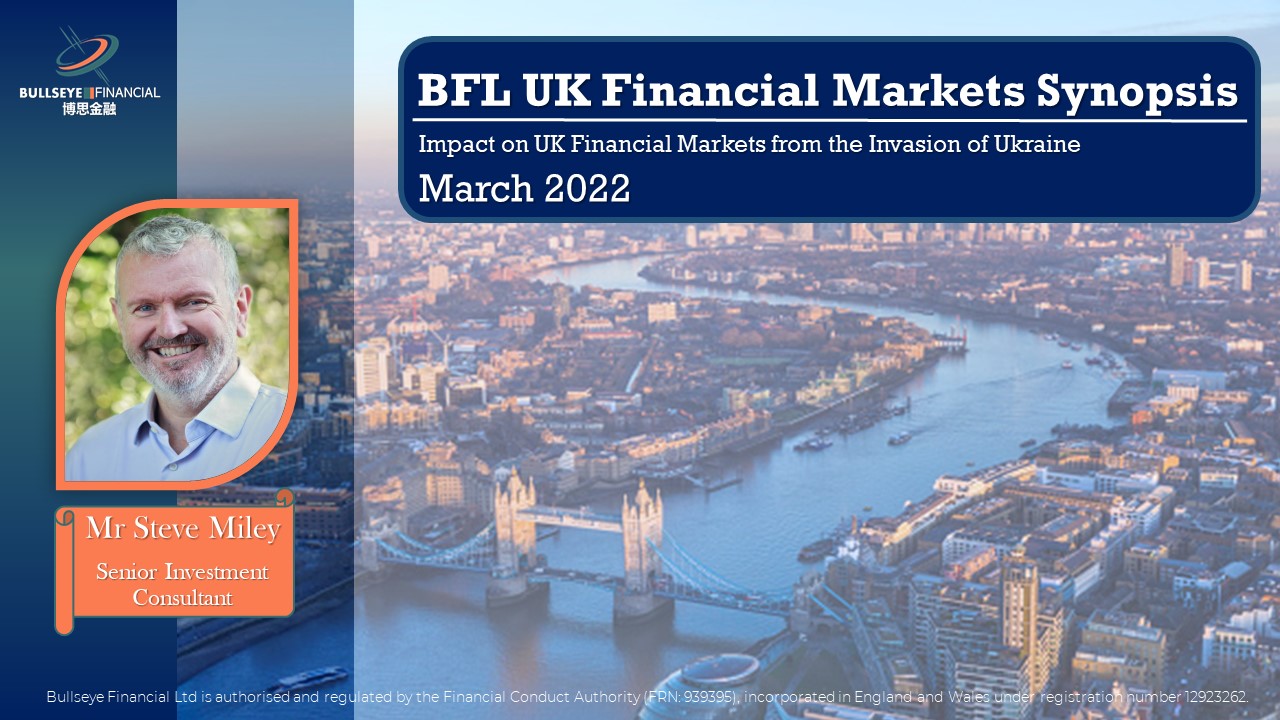BFL UK Financial Markets Synopsis – March 2022
Impact on UK Financial Markets from the Invasion of Ukraine
In this article we are going to look at the impact so far on UK financial markets from the Russian invasion of Ukraine. We will focus on the impact on UK stocks and the FTSE 100, UK Government Bonds (Gilts) and on the currency, the Pound. We will also look at possible future scenarios on these markets depending on how the situation in Ukraine develops.
Impact so far
In the run-up to the Russian invasion of Ukraine on 24th February, UK (and global) financial markets had moved in to a “risk off” scenario, meaning investors were looking to take less risk in financial markets, selling riskier assets and buying safe haven assets. This “risk off” theme initially accelerated on the day of the invasion, 24th February 2022, although markets subsequently reversed some of the more risk averse moves on this day. This is often the scenario we see in the run in to military conflicts, financial markets tend to discount a more negative scenario, shifting aggressively to “risk off”, then once the actual conflict truly begins, markets often quickly begin to reverse the “risk off” theme.
UK Stocks and the FTSE 100
UK stocks were already selling off from mid-February, with the FTSE 100 having hits a multi-year high on 10th February 2022. The move lower in stocks, however, was not only caused by the concerns regarding eh Russian build-up of troops on the border with Ukraine, but also because of ongoing concerns regarding higher UK inflationary pressures, that have been seen globally. These higher inflationary pressures have led the major, global central banks to pivot to a far more hawkish stance on 2022, meaning they are looking to unwind the vey easy monetary policy in place due to the global pandemic. The Bank of England has already raised interest rates twice, in this cycle, up by 0.10% in December 20021 and by 0.25% in February 2022.
On the day of the invasion (24th February 2022) UK stocks broadly spiked lower, with the FTSE 100 hitting its then lowest level of 2022 (just below the January low), down 6.4% at the low point from the high. However, a subsequent recovery during saw the FTSE 100 bounce to within 1.3% of the 10th February 2022 peak, but then in early March has seen a plunge back lower, and at the low of 7th March was 11.9% down from the February high.

UK Government Bonds (Gilts)
UK Gilts have been moving to higher yield territory since the pandemic yield lows in August 2020. The 10yr Gilt yield has moved from 0.10% in August 2020, to a cycle high yield of 1.60% on 15th February 2022. This higher yield move has been driven by an expectation of a normalisation of interest rates from pandemic lows, which has accelerated since December 2021, when the Bank of England indicated a more hawkish stance, prompted by surging inflationary data. The annual inflation rate in the UK pushed higher to 5.5% in January of 2022, the highest reading since 1992.
 However, since 15th February 2022, the 10yr Gilt yield has plunged lower to 1.41% in late February, a reaction to the safe haven demand for UK Gilts.
However, since 15th February 2022, the 10yr Gilt yield has plunged lower to 1.41% in late February, a reaction to the safe haven demand for UK Gilts.
The Pound
The Pound (GBP) has suffered notable losses against the US Dollar since the invasion on 24th February 2022, with GBPUSD dropping about 3%. This has primary been a reaction to US Dollar strength, with the US currency seen as a safe haven. However, the Pound has gained versus the Euro, with EURGBP lower by about 1.8%, due to European Community and therefore the Euro having a more significant exposure to the conflict.

Possible Future Scenarios
We see many possible future scenarios, but will focus on what we see as the likely three:- A longer, drawn out conflict, but with limited escalation
- An escalation of tensions, with Russia becoming more aggressive in Ukraine and/ or threatening NATO countries
- A de-escalation of the conflict, either via a ceasefire and negotiation, or a change in leadership in Russia
We will look at how these different scenarios would impact markets.
UK Stocks and the FTSE 100
- UK stocks will likely, hold above the recently set, early March sell off lows and even return to a more positive theme. This is due to the likelihood that the Bank of England would likely shift away from it currently hawkish stance, to be less aggressive on the interest rate raising cycle. Growth stocks would outperform and defensive stocks to underperform.
- This would see a more aggressive sell off, with the FTSE 100 moving below the current March low and dropping by another 5-15%. Growth stocks would underperform and defensive stocks to outperform.
- Stocks would likely surge back to and maybe above their February peaks.
UK Government Bonds (Gilts)
- UK 10yr Gilts would likely establish a range, trading between 1.00% and 1.60%.
- UK 10yr Gilts would likely move aggressively to lower yields, through 1.00%, maybe closer to 0.7% or even 0.5%.
- UK 10yr Gilts would probably move back towards 1.60%, maybe even pushing above towards 2.00% in the first half of 2022.
The Pound
- GBPUSD would likely establish a range between 1.3000 and 1.3600. EURGBP would be vulnerable to losses closer to 0.80.
- GBPUSD would likely break below 1.3000 and head towards 1.2500 and even below. EURGBP would be vulnerable to even deeper losses closer to 0.78/0.77.
- GBPUSD would likely break towards 1.3600 and maybe head towards 1.3750. EURGBP would likely rebound back towards 0.84/0.85.
In Summary
In late February UK stocks weathered this geological storm relatively well, particularly compared to their US and European counterparts. However, early March losses have seen UK equities under significant negative pressures. Although there is always risk in investing, we now see the skewed risk to the upside for UK and global equity markets.
UK Gilts will more likely establish a range, trading between 1.00% and 1.60%, with the skewed threat towards higher yields. The Pound has probably seen the worst of the losses versus the US Dollar but has potential to surrender recent gains versus the Euro.






